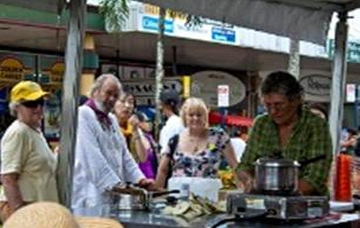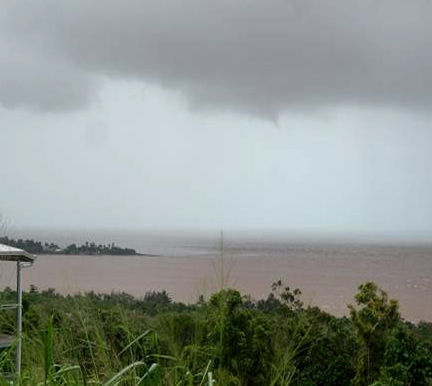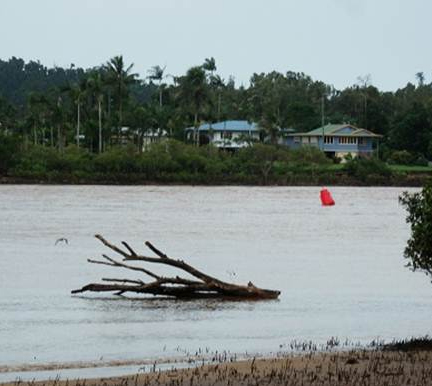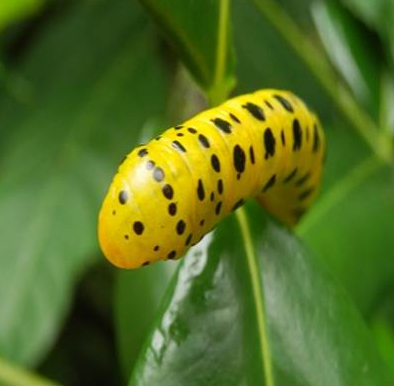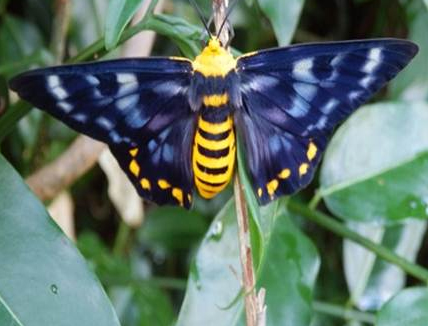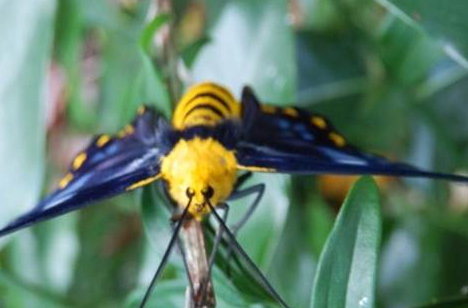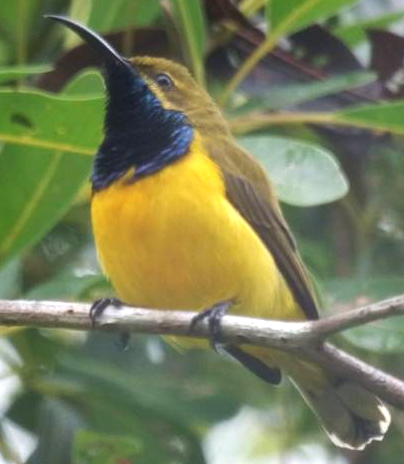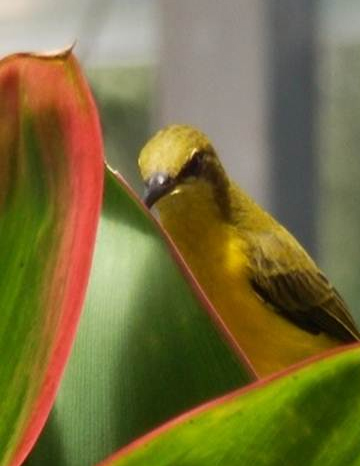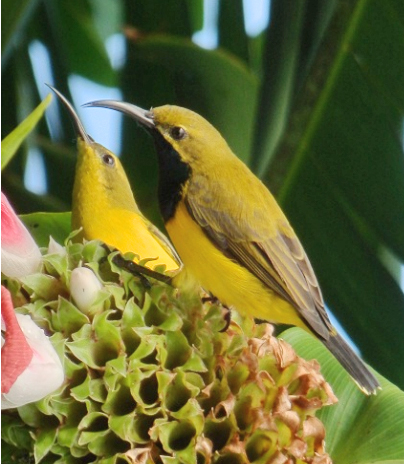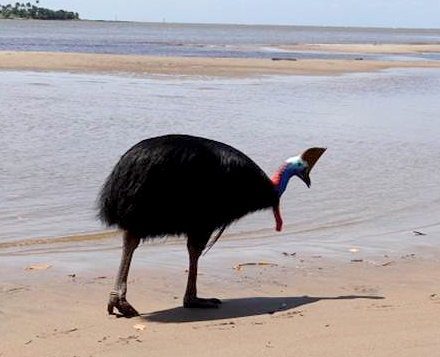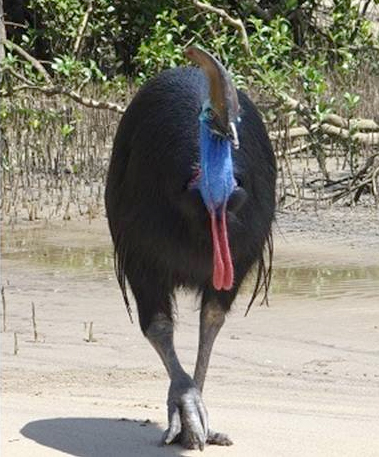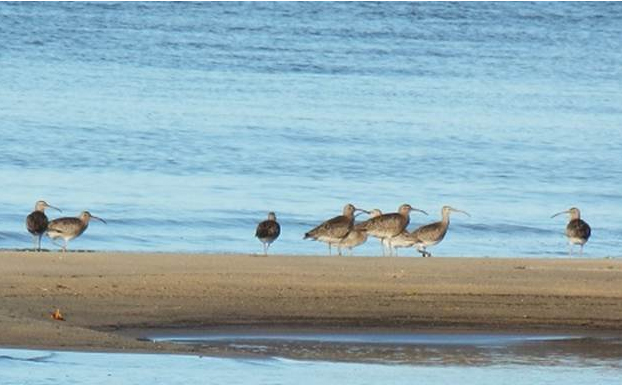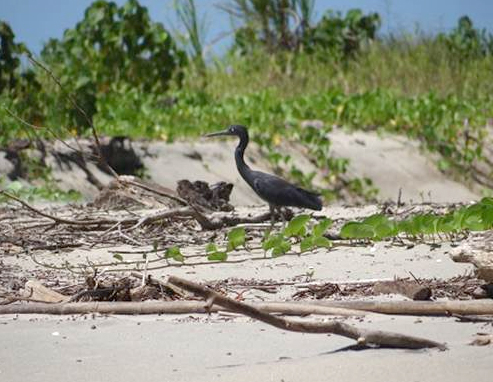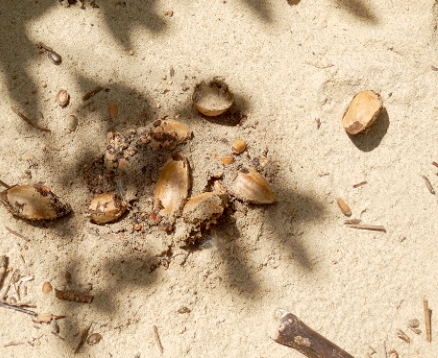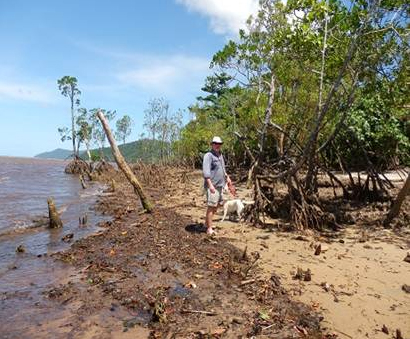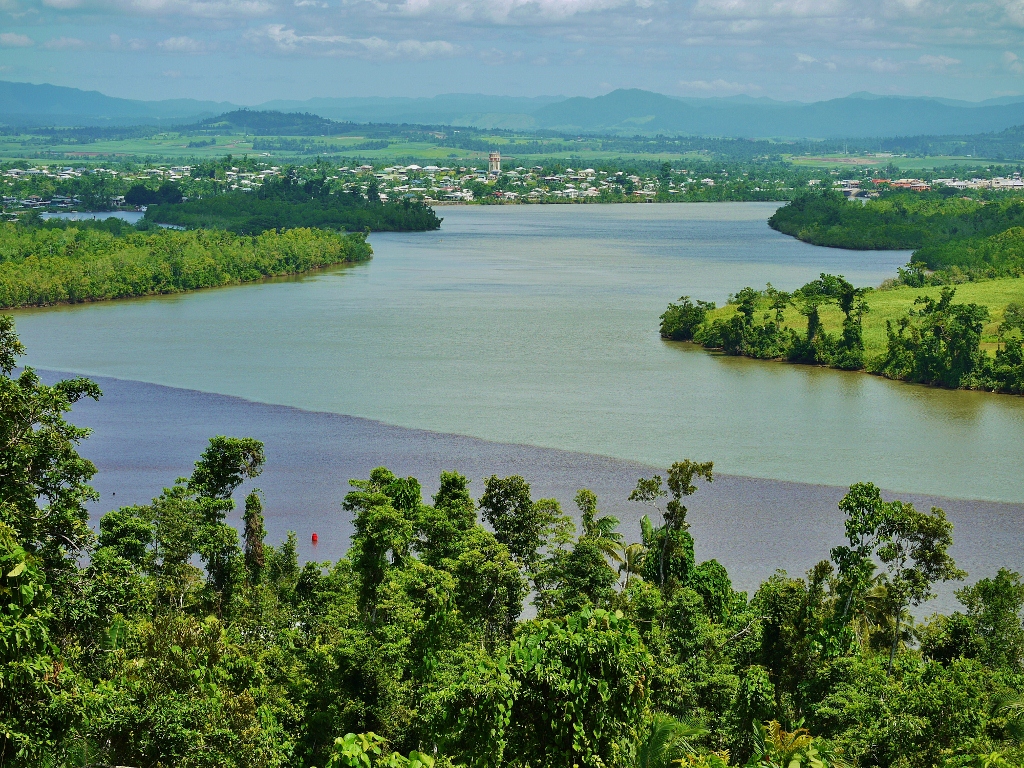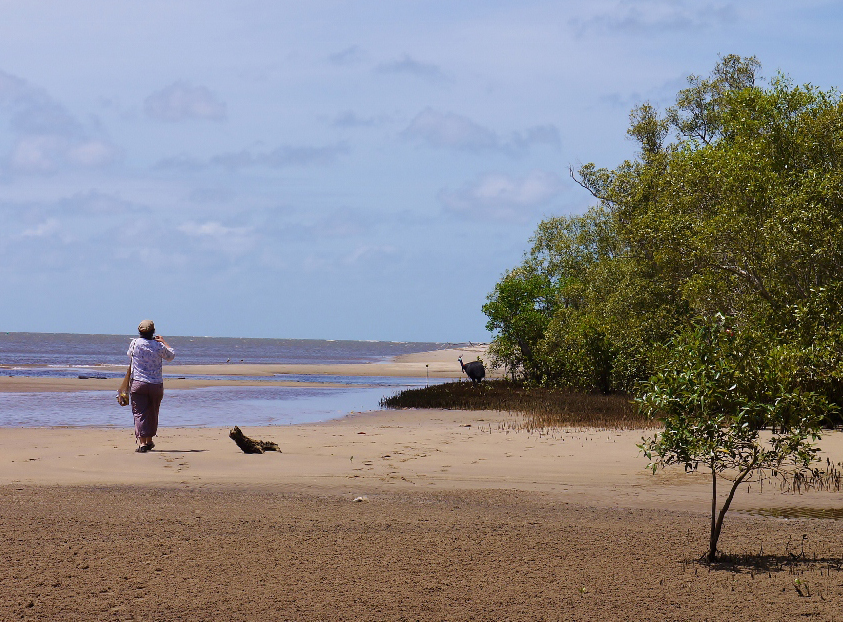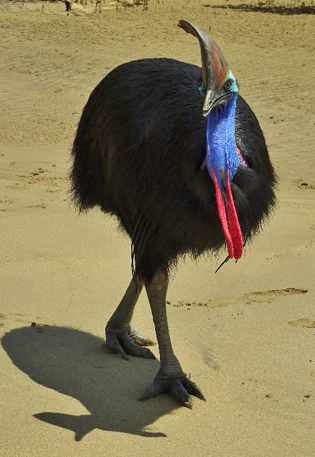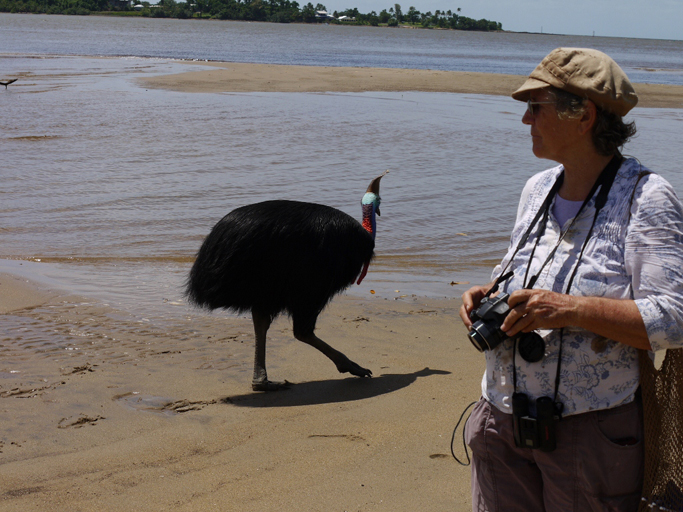Hello from Coquette Point, The Feast of the Senses festival was held last Sunday and amazingly the rain held off and the sun shone brightly until 3pm and then the skies opened. Kirsty Densmore, the event manager talked me into a breadfruit cooking demonstration. I did not know until I saw this photo that celebrity chef Peter Russell-Clark was looking over my shoulder as I cooked. |
The hot humid weather has benefited the 4 o’clock moth’s pupa and they are now hatching into their spectacular adult form. They are hatching overnight and hang about all day to dry in the sun.
Eastern curlews have returned and I saw eight birds on the sandbank. Ahead we saw grey Heron land on the rookery.
We walked around to the front beach and Bill stood in the dying mangrove forest and was shocked. He normally walked only as far as the sandbank within the estuary and had not seen the dieback on the southern side of the Johnstone River mouth.
Debris was everywhere the flotsam from the river washed up all over this lee shore. The dieback in the Coquette Point mangroves has dramatically increase this wet season, the forest has all but gone and the ocean is eroding the dunes which once lay behind the mangrove forest. Studies looking at mangrove dieback have been concentrated within the Johnstone River and the dieback at the mouth has not been examined in spite of my sounding the alarm some thirty years ago and almost every year since. |
A man walking two dogs which were running free, not on leads although he was holding leads, passed us. When I expressed concern to him, particularly as we had just encountered the matriarch cassowary ‘Jessie’, I was abused! We returned to the nursery. Between the dead mangroves and the dogs the magic of the day was gone. |
Last week I included a photo of an ‘unknown nymph’. I thought it was the nymph of a stick insect. However Bill Farmsworth, who is an entomologist put me on the right track and identified it as a plume moth. I searched the data base that Bill sent me and came up with a close match, Deuterocopus socotranus. It appears my little fella could be a new species however we will only know if I catch it and kill it and send it to Queensland Museum for identification!!!!!!! Cheers for now, Yvonne. |
Thanks for again highlighting this damage and showing it to me. Of course it is an ugly sight and it is deplorable, if there is a cause of these deaths that is not being addressed. As a scientist, I would like to know what exactly has caused this. There certainly is anecdotal evidence (as you suggested) that the decline in magroves has coincided with the increase in banana farming in the Johnstone/ Cassowary Coast Shire. I do know for a fact however, that banana growing is not heavily dependent on the use of residual herbicides (eg diuron and atrazine), compared with say, sugarcane farming.
It is certainly possible that agricultural chemicals are contributing to the death of those mangroves, and they could even be the major factor. You only have to see the enormous amount of sediment that comes out of the river mouth and is then blown back onto this affected area, by the south easterly winds usually associated with heavy rain. I am surprised that sampling of soil/silt/mud or dead vegetation has not been carried out already as it would be quite a simple procedure and cost would not be prohibitive. Maybe funding under Reef Rescue could be gotten. I estiamte it would cost around 1-2 thousand dollars to have these tests done. |
Thanks again for the lovely walk, Jessie's company and the awesome biology present everywhere, made it a magic experience.
All the best
Bill Farnsworth
